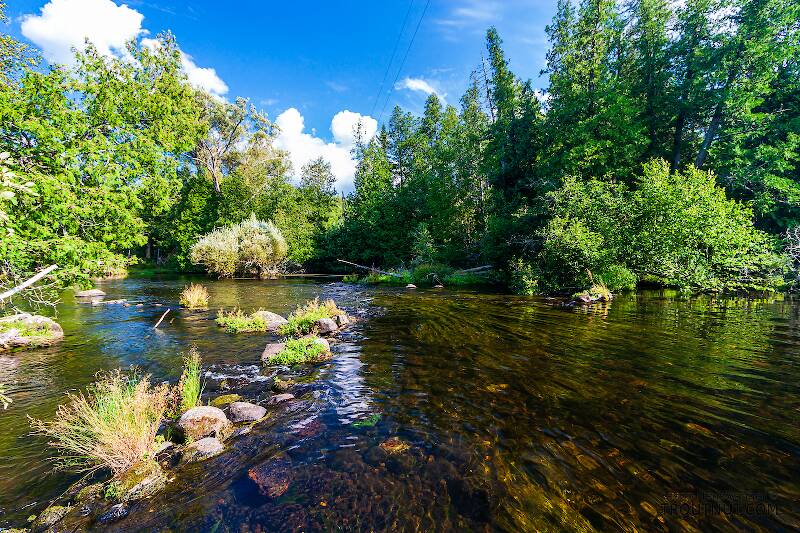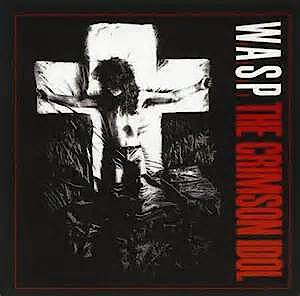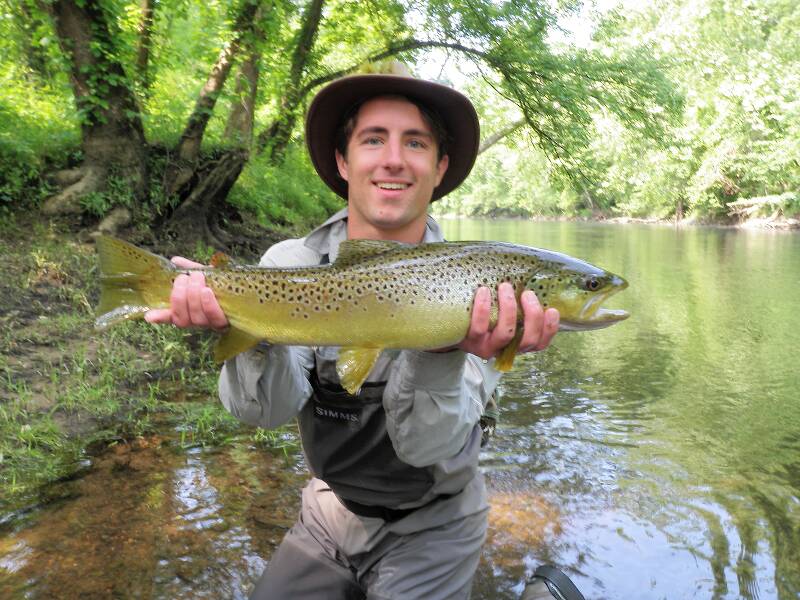
Salmonflies
Pteronarcys californica
The giant Salmonflies of the Western mountains are legendary for their proclivity to elicit consistent dry-fly action and ferocious strikes.
Featured on the forum

This wild-looking little thing completely puzzled me. At first I was thinking beetle or month larva, until I got a look at the pictures on the computer screen. I made a couple of incorrect guesses before entomologist Greg Courtney pointed me in the right direction with Psychodidae. He suggested a possible genus of Thornburghiella, but could not rule out some other members of the tribe Pericomini.

Troutnut is a project started in 2003 by salmonid ecologist Jason "Troutnut" Neuswanger to help anglers and
fly tyers unabashedly embrace the entomological side of the sport. Learn more about Troutnut or
support the project for an enhanced experience here.
Adirman on Apr 15, 2012April 15th, 2012, 10:46 am EDT
Guys:
Went down to the upper gorge today for a few hrs; MAJOR caddis hatch!! Thousands of #16 size grey/tan caddis on the water! Saw a few trout rising but werent taking on the surface. Tied on a #16 Tan caddis on top w/ a #18 grey emerger below. Got 1 take but that was it! Saw 2 other guys fishing and they were trying caddis too to no avail. Seemed VERY difficult to dry fly fish there due to conflicting cross currents. Also, anyone whos ever been there knows that water speed and rocks make it super treacherous to wade! It was hard to get close enough to avoid the conflicting currents to get to where the trout were. I could easily cast to where they were rising, but cross current drag screwed up the drift almost immediately and it was too hard to wade over to that side. Maybe should have explored a spot up/downstream that was safer to cross, IDK but also, the times we did get good drifts, trout ignored them (mostly). Any suggestions for tactics here? I thought maybe soft hackles on a swing may be ideal for imitating the caddis emergers or maybe classis wets? Also, should we have tried to cross to get closer?
Thanks,
Northcountryman
Went down to the upper gorge today for a few hrs; MAJOR caddis hatch!! Thousands of #16 size grey/tan caddis on the water! Saw a few trout rising but werent taking on the surface. Tied on a #16 Tan caddis on top w/ a #18 grey emerger below. Got 1 take but that was it! Saw 2 other guys fishing and they were trying caddis too to no avail. Seemed VERY difficult to dry fly fish there due to conflicting cross currents. Also, anyone whos ever been there knows that water speed and rocks make it super treacherous to wade! It was hard to get close enough to avoid the conflicting currents to get to where the trout were. I could easily cast to where they were rising, but cross current drag screwed up the drift almost immediately and it was too hard to wade over to that side. Maybe should have explored a spot up/downstream that was safer to cross, IDK but also, the times we did get good drifts, trout ignored them (mostly). Any suggestions for tactics here? I thought maybe soft hackles on a swing may be ideal for imitating the caddis emergers or maybe classis wets? Also, should we have tried to cross to get closer?
Thanks,
Northcountryman
PaulRoberts on Apr 15, 2012April 15th, 2012, 11:33 am EDT
Eliminating/controlling drag is first. Otherwise, the rest is moot. Find proper positioning first, then figure stuff out.
If Brachycentrus, likely at this time, then they may be surface egg-laying (although some may dive too, apparently). I've been in several Brachycentrus egg laying blizzards and it helps a lot to twitch your fly to attract attention to it. Otherwise it can get lost in the crowd. After the blizzard, possibly fishing spent patterns in eddies is another possibility.
If Rhyacophilia, or Glossosoma, egg layers would be divers so the dries wouldn't likely be the focus.
If Brachycentrus, likely at this time, then they may be surface egg-laying (although some may dive too, apparently). I've been in several Brachycentrus egg laying blizzards and it helps a lot to twitch your fly to attract attention to it. Otherwise it can get lost in the crowd. After the blizzard, possibly fishing spent patterns in eddies is another possibility.
If Rhyacophilia, or Glossosoma, egg layers would be divers so the dries wouldn't likely be the focus.
Wiflyfisher on Apr 15, 2012April 15th, 2012, 11:48 am EDT
Went down to the upper gorge today for a few hrs; MAJOR caddis hatch!!
My thoughts are the same as Pauls. Are you sure it was a hatch and not caddis laying eggs?
Is it possible to find another location where you could more easily determine what was actually going on?
John S.
https://WiFlyFisher.com
https://WiFlyFisher.com
Adirman on Apr 15, 2012April 15th, 2012, 12:25 pm EDT
Actually I'm not sure. Theymay have been laying eggs now that you mention. Is there a tactical difference though? What I mean is, if the adults are egg laying, they have to come to the surface to do so right where they can be taken?
than you for your input,
Adirman
than you for your input,
Adirman
Shanti on Apr 15, 2012April 15th, 2012, 1:51 pm EDT
If they were taking the egg-laying caddis there are one method to try if conventional presentations fail.
Try a heavily hackled wet on the point and about 1,5 yards up the leader put an imitation of egg-laying caddis on a 6 inch dropper tag.
Cast the rig down and across let the wet fly swing round as you work your rod tip to make the caddis bounce around on and off the surface just like the natural would do. The resistance from your large wet fly (a heavily hackled sz.8 if you like) puts tension on your leader, making it possible to imitate the up and down flight of the natural.
Technically it's a highstick, shortline method.
The technique requires some practicing but it's quite fun. And nice to use when confronted by real tricky currents as your imitation isn't affected by the stream at all as it "dangles" on a tight line.
I have used it mostly when trout has tuned in to egg-laying stones.
And yes, sometimes the wet "anchor" is taken too. ;)
Try a heavily hackled wet on the point and about 1,5 yards up the leader put an imitation of egg-laying caddis on a 6 inch dropper tag.
Cast the rig down and across let the wet fly swing round as you work your rod tip to make the caddis bounce around on and off the surface just like the natural would do. The resistance from your large wet fly (a heavily hackled sz.8 if you like) puts tension on your leader, making it possible to imitate the up and down flight of the natural.
Technically it's a highstick, shortline method.
The technique requires some practicing but it's quite fun. And nice to use when confronted by real tricky currents as your imitation isn't affected by the stream at all as it "dangles" on a tight line.
I have used it mostly when trout has tuned in to egg-laying stones.
And yes, sometimes the wet "anchor" is taken too. ;)
Somewhere, right now, a fish is rising.
And you´re at the computer..
And you´re at the computer..
PaulRoberts on Apr 15, 2012April 15th, 2012, 2:17 pm EDT
Cool idea for such turbulence, Shanti.
Jesse on Apr 15, 2012April 15th, 2012, 5:21 pm EDT
Safe wading should always be the first thing you need to consider. So congradulations on not making the attempt if you felt it to be unsafe. When i know where fish are, whether feeding surface or sub-surface, i always try to get in the best position to cast to them. Even if that means i need to find a crossable section of river. Making the presentation count is very key. Next, probably should have tried a yellow top water frog. That fly is C-L-utch in that situation.
Most of us fish our whole lives..not knowing its not the fish that we are after.
http://www.filingoflyfishing.com
http://www.filingoflyfishing.com
Adirman on Apr 16, 2012April 16th, 2012, 12:03 pm EDT
Shanti;
To work the flies on the swing you jiggle the tipe a bit, is that right? You talking about moving mainly that dropper fly (the egg laying caddis)to impart lifelike movement right?
Jesse;
what size is that yellow topwater your describing?
thanks,
Adirman
To work the flies on the swing you jiggle the tipe a bit, is that right? You talking about moving mainly that dropper fly (the egg laying caddis)to impart lifelike movement right?
Jesse;
what size is that yellow topwater your describing?
thanks,
Adirman
Shanti on Apr 16, 2012April 16th, 2012, 1:18 pm EDT
Adirman, yes that's correct.
You jiggle the tip of the rod to make the fly bounce on and off the surface.
I usually let the fly land for a second or so over the spot where a trout has shown itself.
On some occasions I've had the fly taken whilst beeing in the air.
Yet again, I've mostly used this method during stonefly-time. And in scandinavia that means spring/early summer.
I've used a long 10'#5 rod with a soft tip, soft tips makes jiggling easier.
Even though I like short rods, I have a long one for wintertime nymphing (at least better than icefishing).
You jiggle the tip of the rod to make the fly bounce on and off the surface.
I usually let the fly land for a second or so over the spot where a trout has shown itself.
On some occasions I've had the fly taken whilst beeing in the air.
Yet again, I've mostly used this method during stonefly-time. And in scandinavia that means spring/early summer.
I've used a long 10'#5 rod with a soft tip, soft tips makes jiggling easier.
Even though I like short rods, I have a long one for wintertime nymphing (at least better than icefishing).
Somewhere, right now, a fish is rising.
And you´re at the computer..
And you´re at the computer..
Troutnut on Apr 17, 2012April 17th, 2012, 10:47 am EDT
I thought maybe soft hackles on a swing may be ideal for imitating the caddis emergers or maybe classis wets?
This is very much worth a try. It's certainly possible the trout were feeding on egg-laying adults as people have suggested, but the adults might just be distracting you from some equally important subsurface activity. I've fished the same hatch on the same piece of water, and if I remember correctly, the key was to fish pupa patterns (like a soft-hackle or sparkle pupa) on a downstream swing. That doesn't mean it will work for you (especially if the trout were targeting the egg-layers) but it's worth a shot, especially if you see trout making the sort of slashy rises indicative of chasing caddis pupae.
Jason Neuswanger, Ph.D.
Troutnut and salmonid ecologist
Troutnut and salmonid ecologist
PaulRoberts on Apr 17, 2012April 17th, 2012, 11:55 am EDT
Jason could very well be right. But your statement: "Thousands of #16 size grey/tan caddis on the water!" made me think egg-layers. Trout can make quite a commotion when taking caddis pupae. Same is true when taking midge pupae, but on a smaller scale. Watch close to determine if those fish are taking flies from the surface, or beneath.
Quick Reply
Related Discussions
Topic
Replies
Last Reply






